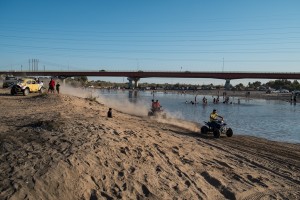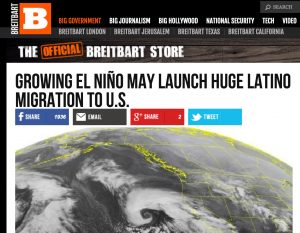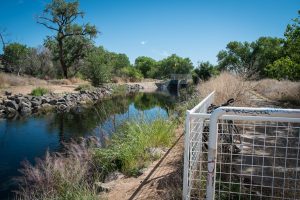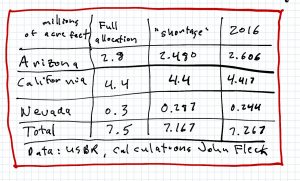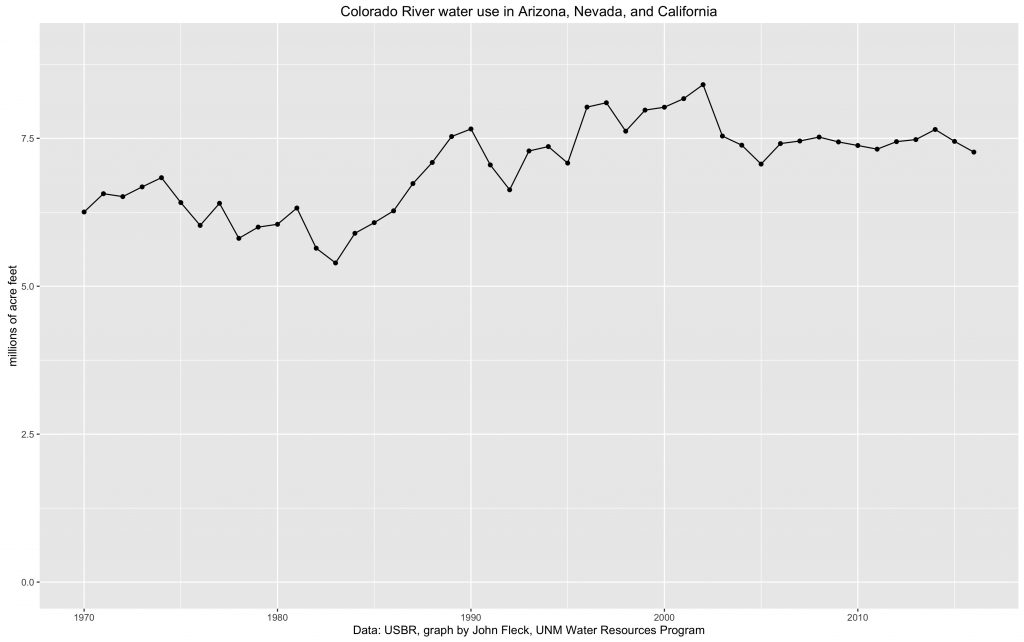A new paper on federal dam operations by my University of New Mexico colleague Reed Benson seems suddenly timely.
It’s an exhaustive review of the legal structures surrounding Bureau of Reclamation and Corps of Engineers dam operations, with an eye toward finding a path to more flexibility in response to changing climate, human values, and needs. The paper’s lengthy, but in light of a changing federal administration it rewards a careful read to help in understanding what can and cannot be done within the constraints of our laws.
The core of Reed’s argument is that periodic review of dam operations, rather than strict adherence to operating plans established when dams were first built, could provide crucial benefits in providing the resilience needed to respond to changing circumstance:
Federal water projects may play an especially crucial role in helping the West adapt to its dramatic changes, because the region’s water allocation and management regime is simply not built for flexibility. The early West prioritized “putting water to work” for industry, irrigation, and other economic uses, and today the region’s water law still reflects that focus on development. Water rights last forever, with little or no legal scrutiny applied to established uses; in times of shortage, the oldest uses have a right to take their full share before later users have a right to any water at all; and the system still struggles to accommodate important “new” uses such as water for recreation and the environment. As the western states’ water law reform efforts have lagged, federal initiatives have become increasingly important, and federal reservoir operations are one area where federal agencies may find a measure of needed flexibility in water management.
Maintaining current operating plans may be the path of least resistance in the short term, and it is easy to understand why the agencies are reluctant to undertake reviews given the potential cost, controversy, and litigation risk. The record shows, however, that for many years dam operations have been the focus of controversy and costly litigation, with most of that litigation arising under the ESA. Maintaining the operational status quo nearly guarantees that endangered species listings and litigation will remain the go-to tactics for those who seek to address environmental problems associated with federal water projects. A more open and inclusive process for addressing environmental concerns could make the ESA less crucial, allowing the agencies to break away from reactive water management driven by a single species, and might even result in less controversy and litigation than the current approach.
In a nation that has always subjected private hydropower projects to periodic review, it is especially difficult to justify allowing federal reservoirs to operate under old plans in perpetuity. After all, these are public projects. Congress authorized them, ostensibly to serve the national interest. They were primarily built with public money, and today they are operated by public agencies. In serving the public, those agencies should do more than apply the best science and analytical tools in determining reservoir operations; they should also engage the public, which deserves to have a say in how these projects operate. Only then can the Corps and the Bureau ensure that their projects will adapt to change and serve the public interest.
We have few clues as to what approach a Trump administration might take toward water policy, but Reed’s paper provides a careful look at what might be possible, especially in light of a new “changing circumstance” – the election’s result – that many of us did not anticipate.
(Reed’s a regular guest lecturer to UNM Water Resources Program students, teaches great water and federal environmental law stuff, if you’re looking for a chance to take a deeper dive into these issues and have a couple of years to devote to getting a masters degree. Plenty of time to apply for fall 2017. 🙂

